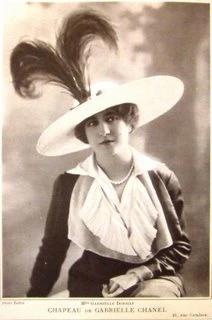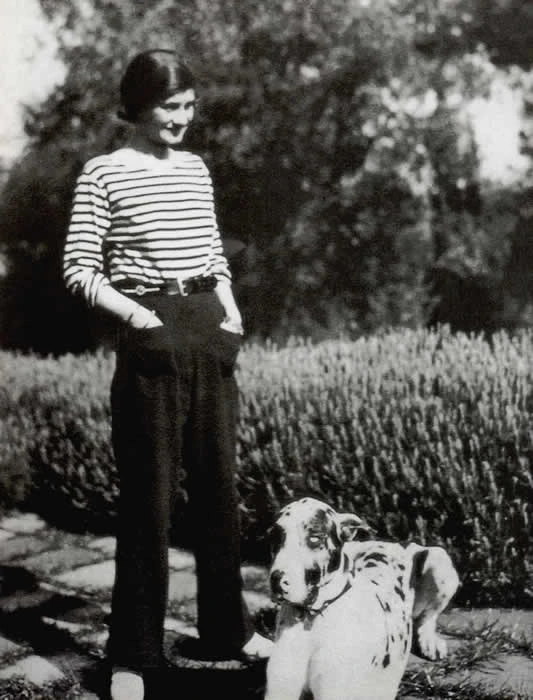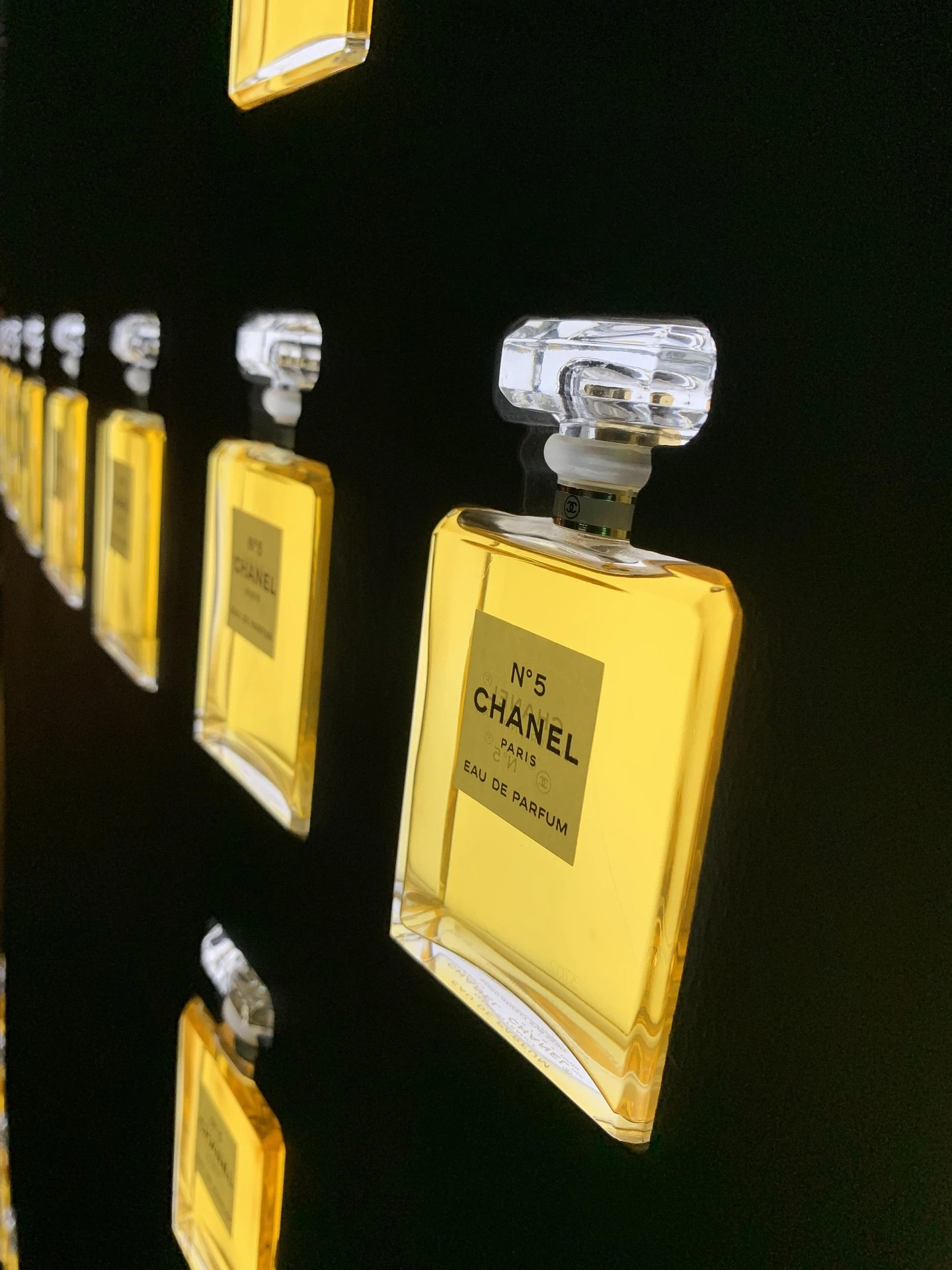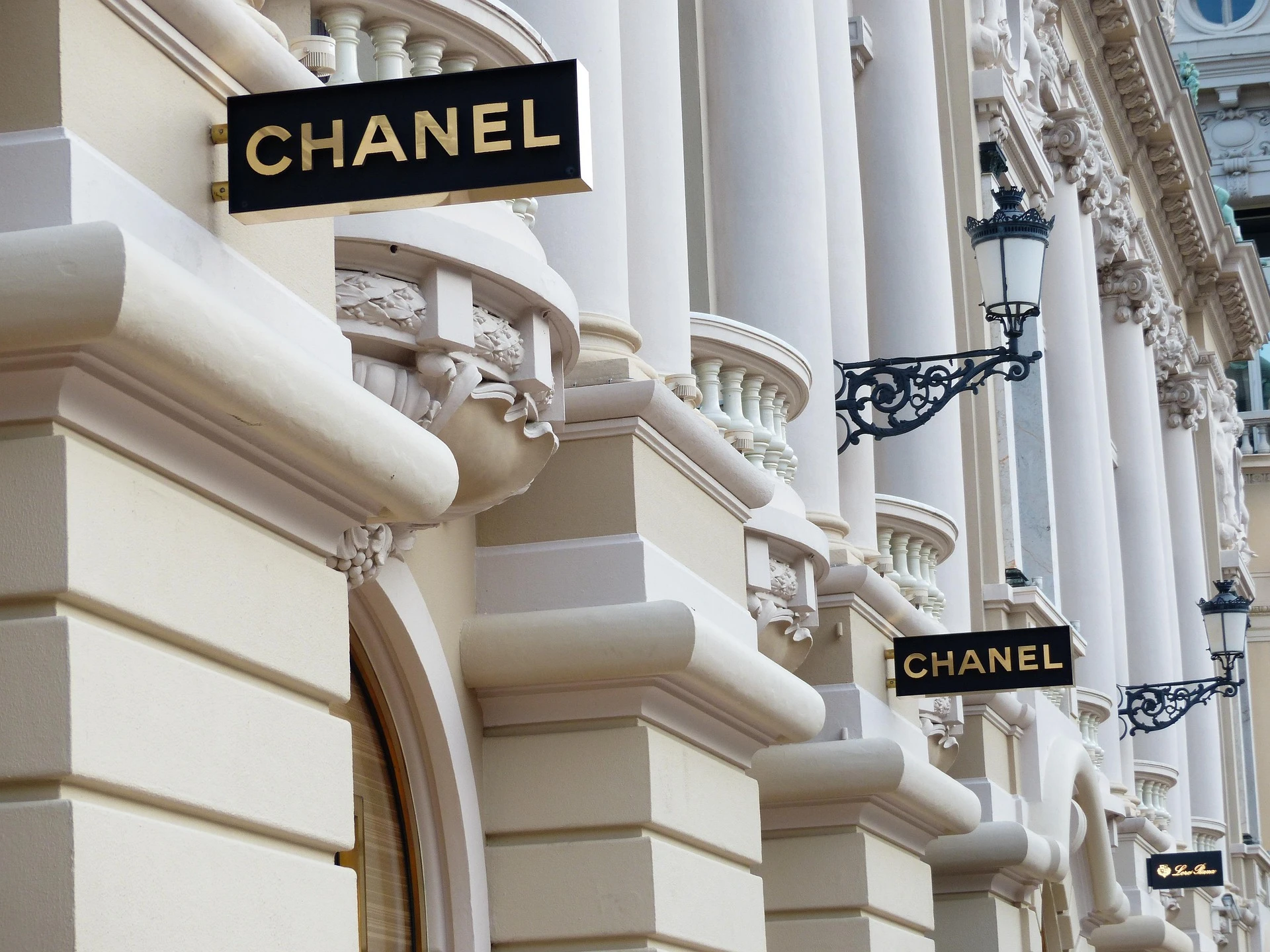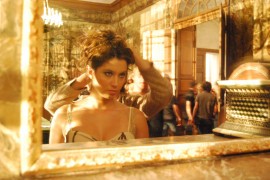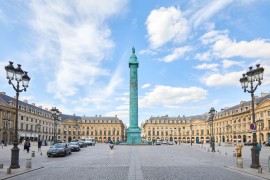Her name was Gabrielle Bonheur Chanel. She became Coco. Born into poverty, raised in an orphanage, she imposed her name on catwalks the world over. Her mother died young, her father disappeared; in Aubazine, with the nuns, she learned sewing and a taste for pure lines. Black and white, austerity and light, would become her signature.
Born poor in Touraine
As a youngster, she sang in Moulins' café-concerts; the nickname "Coco" stuck. But it's couture that changes her destiny. Thanks to Étienne Balsan, then Boy Capel, her great love, she opens her first boutique in Deauville, then in Biarritz. Hats were discovered, followed by clothes of unprecedented comfort. Where women still wore corsets and rigid outfits, Coco Chanel dared flexibility, jersey, freedom.
A hat created by Coco Chanel in 1912
A revolution in allure
In the 1920s, Chanel imposed straight suits, shorter skirts, women's trousers. Black, until then the color of mourning, becomes the most chic color. She'll say: "Luxury must be comfortable, otherwise it's not luxury." With her, the woman is no longer a prisoner of her outfit: she moves, she lives, she exists fully. Her petite robe noire becomes a modern uniform: simple, clean, irresistible.
N°5, a perfume that speaks for itself
In 1921, Chanel launched a fragrance that would tour the world: Chanel N°5. Perfumer Ernest Beaux presents her with several tests; she chooses the fifth, hence the name. Sober bottle, simple name, unforgettable sillage: everything is obvious. Marilyn Monroe would confide that she needed "only a few drops of N°5 to sleep". With N°5, Chanel understood that a couture house is a universe: clothes, accessories, fragrances, a total aesthetic.
Black & white, pure lines
Chanel makes black and white the colors of elegance. Black is no longer sad, it's refined; white says purity. Together, they compose a modern sobriety. She sums up: "Fashion goes out of fashion. Style? Never." The Chanel style of simplicity, rigor and movement has never gone out of style.
Gabrielle Chanel in a simple marinière in 1928
A woman, a house, a century
World War II interrupts the momentum: the house closes, the designer withdraws. Relationships during the Occupation fueled controversy; history will remember. But in 1954, at 71, she returns and relaunches her house. The tweed suit, braided, supple, becomes the uniform of active elegance. The quilted bag, the chains, the beads, the two-tone: an iconic vocabulary is being established. Chanel didn't just create clothes: she invented a way of being.The Chanel woman walks with a sure step, free and simply sophisticated. Her clothing is not armor: it's movement.
Heritage
Coco Chanel dies in 1971, at the Ritz. She leaves an empire and a legacy. Later, Karl Lagerfeld reinterpreted the Chanel vocabulary without betraying it, then Virginie Viard extended the allure with gentleness and precision. The little black dress, the suit, N°5 continue to embody timeless elegance. The Chanel style is not a memory: it's a grammar still spoken.
par CHLOE2017KD de Pixabay
Citations de Coco Chanel
"Fashion goes out of style, style never does."
"To be irreplaceable, you have to be different."
"Luxury has to be comfortable, otherwise it's not luxury."
"It's with what you can't learn that you succeed."
Why Chanel remains
Because allure - more than trend - is the essence of chic. Because simplicity requires intelligence. Because Chanel has given women freedom of allure, a wardrobe for living, working, dancing, lasting. Coco Chanel transformed a century in silhouette.
FAQ
Who was Coco Chanel?
Coco Chanel, born Gabrielle Bonheur Chanel, is the French designer who revolutionized fashion in the XXᵉ century through the freedom of cuts, the little black dress and the tweed suit.
Why is Coco Chanel famous?
Because she liberated women from corsets, imposed sober lines, and created Chanel N°5, an iconic fragrance in world perfumery.
What is Chanel style?
A simple and precise style, dominated by black and white, cuts that move, soft materials and one idea: luxury must be comfortable.
Where does the name "Coco" come from at Chanel?
From her debut at the café-concert, in Moulins: she was nicknamed "Coco", no doubt after the song Qui qu'a vu Coco? - a nickname that would never leave her.
What is Chanel's best-known fragrance?
Chanel N°5 (1921), chosen by Chanel in the fifth essay by perfumer Ernest Beaux. Sober bottle, simple name, mythical scent.
Is the little black dress a Chanel invention?
Yes: she makes it a modern uniform, sober and chic, that spans the decades without going out of style.
Does Chanel still exist and what does the house represent today?
Yes. Chanel remains a major luxury house, faithful to Coco's heritage (tailoring, N°5, iconic accessories) and open to contemporary reinterpretations.
A life between shadow and light, between black and white
What a contrast in Coco Chanel. While she was soon known simply as Coco because of a song she liked to sing, people in the Big World called her "Mademoiselle Chanel". Scandalizing her era by being the first to wear pants, she hated jeans and even more miniskirts. Close to being tonsured at the Liberation because of her closeness to the occupier, she was also close to Churchill. That's that's coco chanel. The black and the white.

